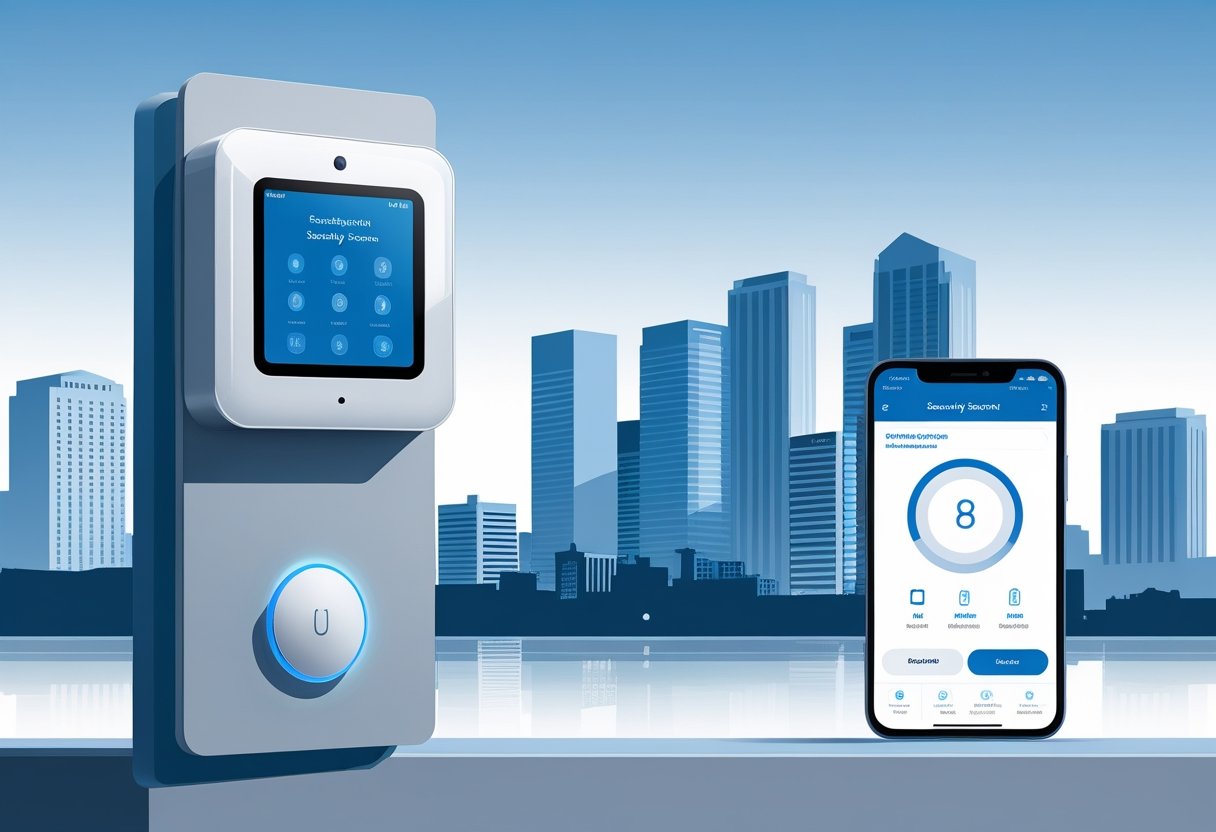Proper fire alarm system inspection is crucial for maintaining safety in your building. Regular inspections ensure that your fire alarm system operates effectively, complying with all necessary regulations and significantly reducing risks during an emergency. In the greater Houston area, understanding the specific requirements for fire alarm inspections can help you safeguard your property and the lives of those within it.
Routine inspections not only identify potential issues before they escalate but also enhance the overall reliability of your fire safety protocols. By knowing the key inspection standards, you can ensure that your fire alarm system meets the guidelines set forth by NFPA 72, which governs the installation and maintenance of fire alarms. It’s essential for you to stay informed about these requirements to avoid costly fines or worse, a hazardous situation during a fire.
Investing time in understanding fire alarm inspection requirements not only keeps you compliant but also demonstrates your commitment to safety. For residents and businesses in the Houston area, ensuring that fire safety measures are up to date will give you peace of mind and help you create a safer environment for everyone.
Core Fire Alarm System Inspection Requirements
Maintaining compliance with fire alarm system inspection requirements is vital for ensuring safety and functionality. You need to understand the specifics of inspection frequency, the difference between visual inspections and functional tests, and the necessary documentation to uphold regulatory standards.
Inspection Frequency and Types
Inspection frequency for your commercial fire alarm system varies based on regional codes and the guidance provided by the National Fire Protection Association (NFPA). Typically, systems require a monthly visual inspection, while functional tests should occur annually.
You may need to adhere to additional check-ups based on factors like system type and occupancy. For instance, smoke detectors may require quarterly testing. Implementing a routine calendar can help ensure you stay compliant and maintain safety standards.
Visual Inspections Versus Functional Tests
Both visual inspections and functional tests serve crucial roles in fire alarm maintenance. Visual inspections involve checking the physical condition of components such as alarms, control panels, and batteries. You confirm that everything is free from damage and easily accessible.
Functional tests, on the other hand, assess whether each component operates as intended. This includes activating alarms and testing signals to the alarm panel. Understanding the distinction between these two types of assessments ensures you meet the NFPA standards effectively.
Required Documentation and Recordkeeping
Accurate documentation is essential for compliance with fire alarm inspection requirements. You must keep a detailed log of all inspections, tests, and maintenance activities. This includes dates, findings, and corrective actions taken.
Records should indicate which components were tested and their performance during functional tests. Using a well-organized system allows you to quickly reference compliance history during inspections by authorities or insurance assessments. Maintaining this documentation is not just good practice; it's a regulatory necessity to protect your property and occupants.
NFPA Codes and Regulatory Standards
Understanding the NFPA codes and regulatory standards is essential for maintaining fire alarm systems. These guidelines dictate the installation, inspection, and maintenance of fire alarm systems to ensure safety and compliance.
Overview of NFPA 72 Requirements
NFPA 72, known as the National Fire Alarm and Signaling Code, outlines the standards for fire alarm systems in commercial buildings. This code includes installation requirements for various types of detection equipment, such as smoke and heat detectors, and specifies the maintenance protocols to keep systems operational.
You must perform regular inspections and testing to ensure that alarm systems function correctly. According to NFPA 72, these procedures help safeguard lives and property. The code mandates a thorough understanding of equipment specifications, making compliance critical.
NFPA 10 and Related Codes
NFPA 10 covers fire extinguisher requirements and complements the stipulations found in NFPA 72. Fire alarm systems and extinguishers work collaboratively to provide comprehensive fire protection. It is essential to enlist a licensed fire protection company to perform inspections and maintenance as required by these codes.
Testing intervals and maintenance practices for fire alarms should align with NFPA 10 guidelines to promote a safe environment. Staying familiar with both NFPA 10 and NFPA 72 ensures your facility complies with fire safety regulations and minimizes risks.
Role of the Authority Having Jurisdiction (AHJ)
The Authority Having Jurisdiction (AHJ) plays a critical role in fire code enforcement. This entity, which may be a local fire department or designated safety organization, ensures compliance with NFPA codes.
You must consult the AHJ for specific requirements, as they can provide guidance on local amendments to the NFPA standards. Working with the AHJ can streamline the permitting process and ensure that all inspections meet regulatory obligations.
By understanding the interplay between NFPA standards and the AHJ's role, you can better maintain fire safety in your facility.
Critical System Components Subject to Inspection
Regular inspection of fire alarm systems is essential to ensure that all critical components function correctly. Understanding what needs to be inspected can help you maintain compliance with safety codes and ensure reliable operation during emergencies.
Initiating Devices: Smoke, Heat, and Duct Detectors
Initiating devices are your first line of defense in fire detection. This category includes smoke detectors, heat detectors, and duct detectors.
- Smoke Detectors: Check for proper placement based on NFPA guidelines and ensure that they are clean and free from obstructions. Regular testing helps confirm functionality.
- Heat Detectors: Test these devices to ensure they activate correctly at the designated temperatures. Note any environmental factors that may affect their performance, such as humidity or dust.
- Duct Detectors: These should also be inspected to ensure they effectively monitor air flow in HVAC systems. Annual maintenance is often recommended to keep these units operational.
Each type of detector plays a vital role in early fire detection and requires regular inspection.
Manual Pull Stations and Fire Suppression Interfaces
Manual pull stations empower individuals to alert others in the event of an emergency. It is vital to check their visibility and accessibility.
- Ensure that the stations are mounted at the correct height and are easily identifiable. Regular tests should include pulling the stations to confirm they are functional.
- Fire suppression interfaces connect manual stations with suppression systems. Inspect these interfaces to ensure they respond accurately and initiate the suppression process without delay.
Adhering to inspection schedules for manual pull stations and suppression interfaces enhances overall safety in your facility.
Notification Appliances
Notification appliances are critical for alerting occupants about emergencies. These can include horns, strobe lights, and speakers.
- Ensure all notification devices are operational and clearly audible or visible throughout the area.
- Test the volume levels of audible devices and verify the light intensity of visual alarms. Regular inspections will help catch any failings before they affect performance.
Inspection of these appliances guarantees effective communication in emergency situations, aiding in the swift evacuation of personnel.
Supervising and Monitoring Equipment
Supervising and monitoring equipment ensures that all components of your fire alarm system are performing as intended.
- Supervising Stations: These locations monitor signals from the alarm system. It’s essential to verify that they receive and respond to signals accurately.
- Radio Alarm Supervising Station Receiver: This element adds another layer of oversight by wirelessly monitoring alarm signals. Ensure that the receiver is in good working condition and can facilitate timely notifications.
Regular inspections of these systems help you maintain compliance with industry standards and enhance the reliability of emergency responses.
Inspection Procedures and Testing Protocols
Regular inspection and testing of fire alarm systems is crucial for ensuring their functionality and reliability. Establishing comprehensive procedures facilitates compliance with safety regulations and allows for the timely maintenance of critical components.
Battery Tests and Power Supply Verification
Your fire alarm system's effectiveness relies on adequate power supply, specifically from batteries. Conduct routine battery tests to ensure that all backup power sources are functional and can support operations during outages.
Steps for Battery Testing:
- Remove the battery from the system.
- Use a multimeter to check voltage levels.
- Replace any batteries reading below manufacturer's specifications.
Additionally, verify that the power supply provides consistent voltage without fluctuations. Regular checks will enhance the overall reliability of your system and prevent unexpected failures during emergencies.
System Test Procedures
Conducting a thorough system test involves simulating conditions to ensure every component operates properly. Begin by initiating a fire alarm signal from different initiating devices, such as smoke detectors or pull stations, to assess their responsiveness.
Key Test Elements:
- Initiating Devices: Test each device to confirm it activates the alarm.
- Notification Appliances: Ensure speakers, horns, or strobes engage correctly.
- Reset Functions: Verify that the system can be reset without issues.
Document each test and keep a log for compliance. Performing these tests at least quarterly aligns with NFPA 72 standards, ensuring your fire alarm system is ready when needed.
Annunciators and Control Panel Functions
The annunciator panel acts as your command center during an emergency. Regularly check all functions of the control panel, including display clarity and alert notifications.
Control Panel Checks:
- Confirm that all status indicators are operational.
- Run self-diagnostic tests to detect faults within the system.
- Verify communication with remote monitoring services if applicable.
Regular attention to these components enhances situational awareness and response efficiency. By prioritizing these inspections, you strengthen the fire protection efforts in your facility, ensuring compliance and safety for all occupants.
Commercial and Building-Specific Requirements
Understanding the inspection requirements for fire alarm systems in commercial buildings is essential for ensuring safety and compliance. Specific intervals, occupancy considerations, and coordination with fire service professionals can greatly influence the effectiveness of fire protection measures.
Commercial Fire Alarm System Inspection Intervals
Regular inspection intervals for commercial fire alarm systems are critical to maintain operational integrity. Per the NFPA 72 code, various inspections have prescribed frequencies:
- Monthly: Inspect alarm batteries and perform visual checks on devices.
- Annually: Conduct comprehensive tests on all alarm components, including smoke detectors and control panels.
These inspections help identify potential issues early and ensure that systems function correctly during emergencies. Additionally, businesses in the greater Houston area must adhere to local regulations, which may impose stricter requirements based on building use.
Occupancy-Based Considerations
Different occupancy types significantly influence fire alarm system requirements. For example, high-rise buildings and assembly occupancy facilities often demand more advanced detection systems compared to standard office settings. Building characteristics to assess include:
- Number of occupants
- Functionality (e.g., residential vs. commercial)
- Building height and layout
These factors dictate the sophistication and type of fire alarm systems needed. Your building's unique characteristics determine whether more extensive coverage, such as dual-sensor smoke detectors or extensive manual fire alarm stations, is required to effectively protect occupants.
Coordination With Fire Service Professionals
Engaging with local fire service professionals is vital for effective fire safety management. Their expertise can help ensure your fire alarm systems meet regional codes and standards. Key steps include:
- Consultation: Develop relationships with fire marshals for insights into code requirements specific to the greater Houston area.
- Training: Implement regular training for your staff from local fire experts to familiarize them with fire alarm operations and emergency procedures.
- Testing: Schedule joint testing events. This collaboration fosters better coordination during emergencies.
By prioritizing these elements, you not only enhance fire protection but also meet compliance mandates critical to your business's success.
Ongoing Compliance and Best Practices
Maintaining compliance with fire alarm system requirements is crucial for safety and regulatory adherence. This section highlights essential practices for keeping your systems up to date, effective, and in line with standards set by NFPA 72 and other regulations.
Maintaining Inspection Records
Keep detailed records of all fire alarm system inspections, tests, and maintenance activities. This documentation is essential for demonstrating compliance with NFPA 72 requirements.
Include the following in your records:
- Inspection Dates: Record when each inspection occurs.
- Findings: Note any issues discovered and corrective actions taken.
- Testing Results: Document the outcomes of routine tests on alarms and other components.
Regular audits of these records ensure you remain compliant and can aid in identifying patterns that might indicate common issues. Accurate records also serve as proof for inspections by local fire marshals or insurance companies.
Responding to Code Updates
Stay informed about updates to fire safety codes, particularly those from the National Fire Protection Association. Changes in NFPA 72 can affect your compliance status and operational procedures.
Here are steps to ensure you remain current:
- Regular Training: Attend training sessions focused on code changes and implementation strategies.
- Professional Consultation: Partner with fire safety professionals for updates related to your systems.
- Review Procedures: Periodically assess your policies and maintenance routines to align with new standards.
Being proactive in addressing code changes not only keeps you compliant but also enhances the safety of your property.
Training and Certification for Inspectors
Ensuring that your fire alarm system inspection personnel are properly trained is essential for compliance. Consider the following aspects:
- Certification Programs: Encourage inspectors to obtain certifications recognized by the National Fire Protection Association.
- Ongoing Education: Implement regular training sessions to update inspectors on the latest technologies and best practices in fire alarm systems.
- Hands-on Training: Provide opportunities for practical experience.
Qualified inspectors are better equipped to identify issues and ensure compliance during inspections. This ultimately contributes to the integrity and reliability of your fire alarm systems, directly impacting safety.
Frequently Asked Questions
This section addresses common inquiries about fire alarm system inspection requirements. You will find essential information regarding standards, testing frequency, procedures, documentation, and selecting inspection companies specifically for the greater Houston area.
What is the NFPA 72 standard for fire alarm system testing and maintenance?
The NFPA 72 standard outlines the minimum requirements for fire alarm systems. It specifies testing and maintenance protocols to ensure systems operate effectively. Compliance with this standard is critical for safety and regulatory adherence.
How frequently must fire alarm systems be tested according to NFPA-72?
Fire alarm systems must be tested at least annually, with certain components requiring more frequent checks. This may include smoke detectors, which often need semi-annual or quarterly inspections based on usage and environmental factors.
What are the specific procedures for conducting a fire alarm system inspection?
A fire alarm system inspection includes visual assessments, testing of components, and verification of system functionality. Inspectors will review documentation and ensure all devices conform to manufacturer specifications and NFPA 72 guidelines.
What forms are used to document NFPA 72 fire alarm system inspections?
Documentation typically includes inspection reports, testing records, and maintenance logs. These forms should be completed and retained for compliance verification and should reflect the outcomes of each inspection conducted.
Are there different requirements for semi-annual inspections of fire alarm systems?
Yes, semi-annual inspections may have additional requirements compared to annual checks. These may involve more detailed testing of specific system components and thorough inspections of environments affecting system performance, such as dust or humidity levels.
What criteria should be used when selecting a fire alarm inspection company?
When selecting a fire alarm inspection company, consider their experience, certifications, and familiarity with NFPA 72 standards. It's also important to ensure they operate in the greater Houston area and can meet your specific inspection needs effectively.
.svg)



.svg)


.svg)



